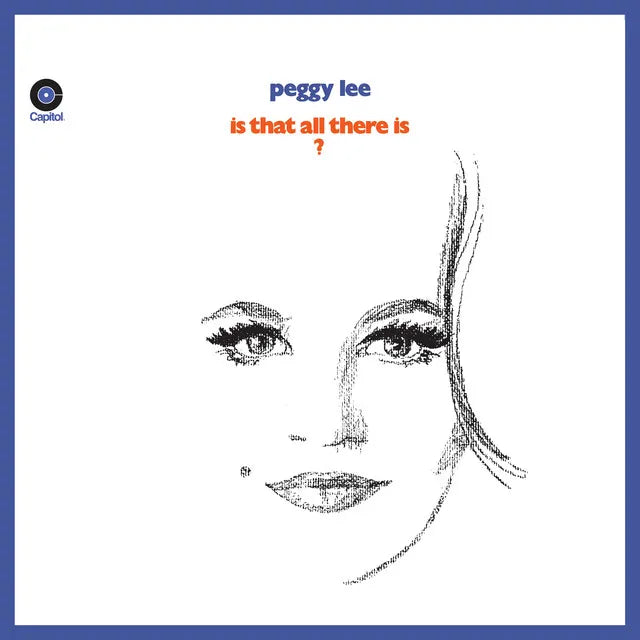Peggy Lee Biography
Who is Peggy Lee? A Brief Career Overview
Meet Peggy Lee, the legendary American jazz and pop singer, songwriter, and actress whose enchanting voice and compelling songwriting made her one of the most influential musical artists of the 20th century. Born Norma Deloris Egstrom on May 26, 1920, Lee's career spanned seven decades, where she became a trailblazer for contemporary singer-songwriters, composing over 270 songs and recording more than 1,100 masters. With a distinctive sultry vocal style that captivated audiences, she is best remembered for her timeless hits like "Fever," "Why Don't You Do Right?," and "Is That All There Is?" which not only reached the top of the charts but also left a lasting impact on the music industry and vinyl culture.
Lee's unique contributions include blending poetry with music, crafting conceptual albums, and her illustrious collaborations with other jazz and pop greats. As an artist whose work continues to resonate with vinyl collectors and music lovers alike, Peggy Lee's albums are cherished artifacts that encapsulate her artistic brilliance and emotional range, making her a beloved figure in the world of vinyl records.
Peggy Lee's Early Life and Background
Peggy Lee was born in Jamestown, North Dakota, into a large Lutheran family as the seventh of eight children. Her early years were shaped by a blend of Swedish and Norwegian heritage, leading to a culturally rich upbringing. Tragically, Lee lost her mother at just four years old, which deeply affected her and fostered a sense of resilience and a strong connection to her artistic expression.
From a young age, Peggy was drawn to music, singing in church and at home. By her teenage years, she was already performing regularly on local radio, showcasing her undeniable talent. It was during these formative experiences that Lee's passion for music began to flourish, setting her on a path toward the vinyl record world. Her early exposure to music laid a solid foundation for her future as a performer who would eventually become an iconic figure in the recording industry.
The Musical Influences That Shaped Peggy Lee's Sound
Peggy Lee's artistic style was influenced by a diverse range of musicians and genres. From the jazz vocalists of the 1930s to the emerging pop sounds of the 1950s, Lee drew inspiration from artists like Billie Holiday and Ella Fitzgerald, integrating their complexities into her own unique sound. Her smooth vocal delivery and ability to convey deep emotion were hallmarks of her performances.
Lee's formative years were not just about singing; they included the collection of vinyl records by these influential artists, allowing her to study their techniques and develop her signature sultry style. As she honed her craft, her affinity for jazz and pop continued to evolve, embodied in her timeless recordings that remain popular among vinyl enthusiasts.
How Peggy Lee Entered the Music Industry
Peggy Lee's journey into the music industry began on the airwaves of North Dakota, where she quickly developed a following. After changing her name from Norma Deloris Egstrom to Peggy Lee, she moved to Hollywood and first performed at local venues, gaining crucial exposure. It wasn't long before she caught the attention of bandleader Benny Goodman, who invited her to join his orchestra.
Her first recording, "Elmer's Tune," solidified her presence in the industry. But it was her hit, "Why Don't You Do Right?", that launched her into stardom, beautifully capturing the sultry essence that would define her career. This era also saw her experimenting with vinyl releases, marking her transition from local performer to an established artist with a signature sound that would captivate audiences for decades.
Peggy Lee's Breakthrough and Rise to Fame
Peggy Lee's breakthrough came in the early 1940s when her single "Why Don't You Do Right?" climbed the charts and became a defining moment in her career. This song, which sold over a million copies and positioned her as a household name, marked the beginning of her prolific output of vinyl records that would resonate with listeners for generations.
Her ability to blend pop and jazz elements earned her accolades, including Grammy nominations and wins throughout her career. Hits like "Fever," which showcased her enchanting vocal style, further solidified her reputation as one of the greats. Each vinyl release played a crucial role in her ascendance, making her a favorite among collectors and a prominent figure in music history.
How Personal Life Shaped Peggy Lee's Music
Peggy Lee's personal life was a source of inspiration for her music. Her complex relationships, including her marriage to guitarist Dave Barbour, influenced her songwriting, imbuing her lyrics with emotional depth. Struggles such as her fight for fair compensation from Disney for her work on the animated classic "Lady and the Tramp" showcased her determination and passion for her craft.
Lee's philanthropic efforts, including her involvement in various charities, revealed her compassionate nature and contributed to her public image as an artist dedicated to making a difference. Her life experiences, intertwined with her artistry, created a profound connection with her audience, allowing her to express her triumphs and challenges through her work on vinyl.








































